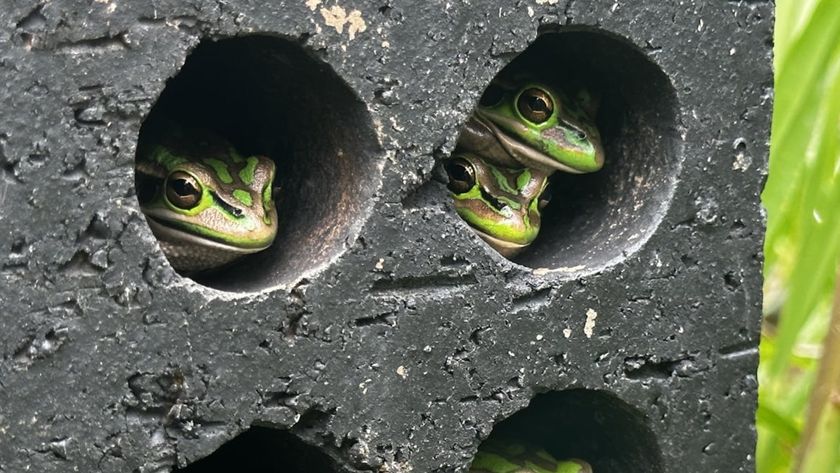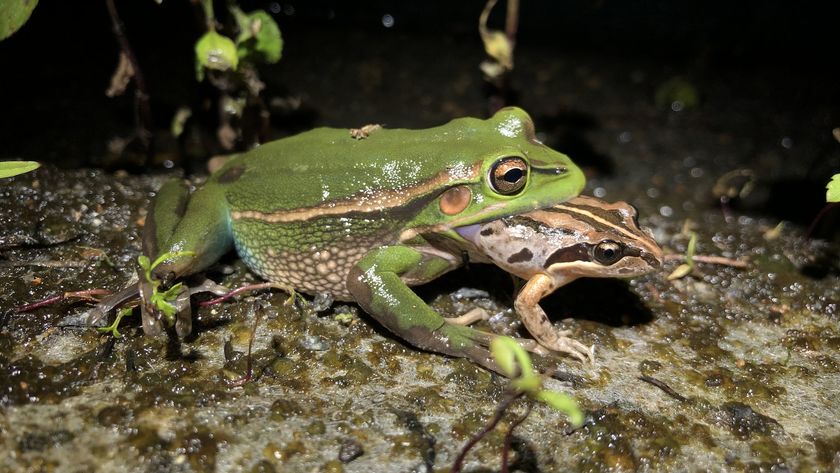40 Freaky Frog Photos
Huge Frog Was Eating Machine
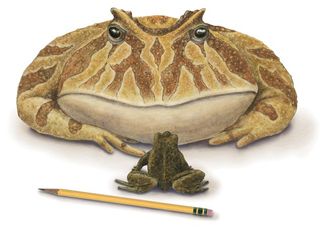
An illustration of the giant Cretaceous-era frog, Beelzebufo ampinga, next to the largest living frog on Madagascar, the Mantydactylus ampinga.
More Frogs Dying as Planet Warms
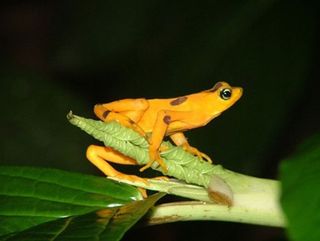
The Panamanian golden frog is one of more than 100 species of disappearing harlequin frogs.
Frog Survival 101: Fake a Mean Look
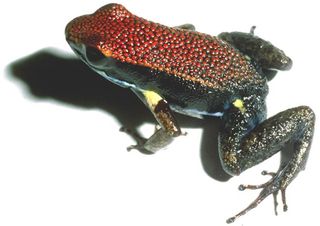
For nonpoisonous frogs, the trick to not becoming dinner is to look poisonous — but not too poisonous. Scientists studied frogs in the Amazon rainforest in Ecuador, and this non-toxic frog, Allobates zaparo, has colorful patterns that tell predators that it is toxic and would not make a good meal. Although A. zaparo can't actually back up this threat, its coloration fools predators into looking elsewhere for food.
Ultrasonic Frogs Croak in Secret
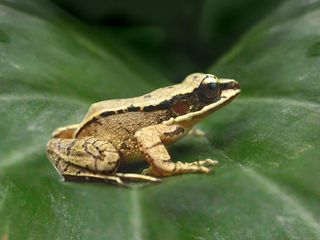
Chinese concave-eared torrent frogs have an ear for ultrasound, so other creatures don't hear them croak.
Frog Hops Back into Existence
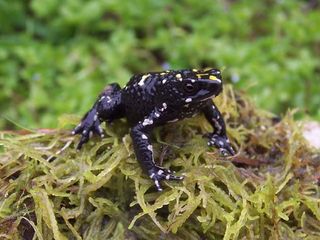
The painted frog (Atelopus ebenoides marinkellei), from Colombia. The survival of the harlequin frog provides hope that other species might survive the killer fungus.
Warming Kicks Frogs While They're Down
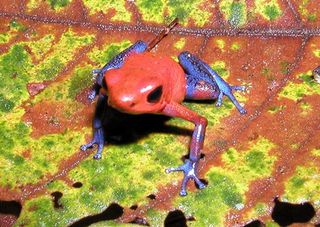
Oophaga pumilio, the strawberry poison frog, is one of a number of species of amphibians and reptiles declining in lowland forests of Costa Rica.
Fungus Sex Is Threat to Frogs
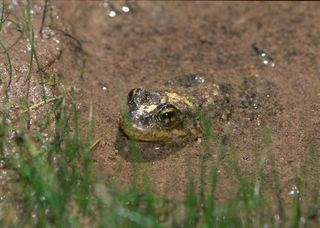
A mountain yellow-legged frog (Rana muscosa) at Milestone Basin in Sequoia National Park.
Sign up for the Live Science daily newsletter now
Get the world’s most fascinating discoveries delivered straight to your inbox.
Lost Forest in Africa Yields New Species
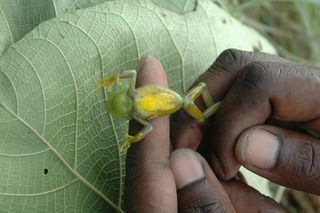
Researchers found two new species of frog on their expedition to a once lost forest in Africa.
Bizarre Amphibians Found Living on the Edge
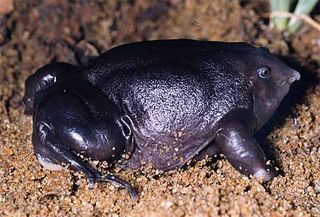
The purple frog is a burrowing species that spends most of the year up to 13 feet (four meters) underground feeding on termites.
Tiny Newfound Frog Fits on a Fingertip
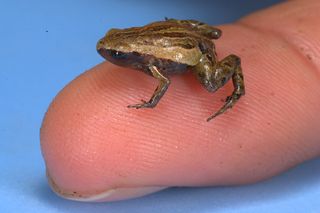
Noblella pygmaea on a fingertip. The frog is about 0.45 inches (11.4 millimeters) long.
Study: Farms Fuel Frog Deformities
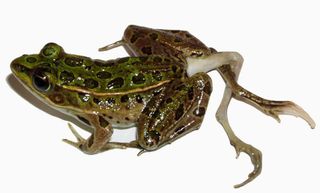
Infectious parasites cause missing limbs, extra limbs and other malformations in frogs--and farm watershed may be to blame.

